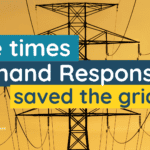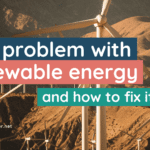The European Union is implementing a number of platforms for electricity balancing, and you may already have heard some of the names: PICASSO, MARI and TERRE, among others. But what exactly are they, and why is the EU doing this now?
Background: the Electricity Balancing Guideline
The European Union needs an internal electricity market that is well run, in order to maintain a secure and affordable supply for all its citizens. In 2017, the EU brought in regulations about electricity balancing that are designed to integrate the electricity markets across EU countries. The Electricity Balancing Guideline was created to encourage:
- Standardisation of rules applicable to network operators;
- Cross-border cooperation and sharing of resources between member states;
- A more efficient use of the grid for energy-balancing purposes;
- Greater competition;
- More liquidity in short-term electricity markets;
- More renewable generation.
To achieve the aims of this new policy, various platforms are being created.
Cross-border TSO cooperation
The need for cross-border cooperation on electricity networks led to the creation of a pan-European body for transmission system operators (TSOs) in 2008. The European Network of Transmission System Operators (ENTSO-E) represents 39 TSOs from 35 different countries.
While individual TSOs are focused on keeping their respective networks running on a second-by-second basis, the ENTSO-E deals with the bigger picture and long-term strategy.
ENTSO-E and balancing services
One of the big strategic questions for ENTSO-E is how to balance the grid so that supply is matched with demand.
In Europe, national grids are stable at a frequency of 50Hz, and there isn’t much room for error – a deviation of just 0.2 Hz either way can cause system-wide outages. To keep the frequency stable, TSOs work with balancing service providers. These could be generators who adjust their power output, or demand response assets who adjust their power consumption. The challenge for ENTSO-E is how to make this work on a pan-European level. Their solution involves designing platforms specific to the different types of balancing services required.
Categories of balancing reserves
ENTSO-E divides balancing reserves into four categories, based on the speed of the reaction expected from the balancing service providers.
Frequency Control Reserve (FCR), or primary reserve, is the fastest responder because it bypasses the TSO and uses smart grid technology to read the grid frequency directly and automatically react within 30 seconds.
Automatic Frequency Restoration Reserve (aFRR), or secondary reserve, responds automatically to an activation signal sent by the TSO. It has a Full Activation Time (FAT) of five minutes.
Manual Frequency Restoration Reserve (mFRR), or tertiary reserve, is seen as a third line of response to be used when deviations in the frequency of the power on the grid haven’t been solved by FCR or aFRR. As the name suggests, it is manually activated by the asset owner in response to a signal sent by the TSO. This happens within 12 and a half minutes.
Replacement Reserve (RR), also known as contingency reserve, is the fourth category. Generators that take longer to start up (usually between 30 minutes and an hour) are brought online to relieve the quicker-responding generators.
ENTSO-E has created a different platform for trading each of the four categories of the balancing reserves.
FCR Cooperation
The FCR Cooperation is a common market for FCR procurement, in which participating TSOs pool the offers they receive and put them up for daily auction (to be applied the next day). This benefits balancing service providers by offering them a large common market to sell their services, and it benefits the end users by keeping energy prices as low as possible.
Currently the FCR Cooperation includes 11 TSOs from eight different European countries. It is the largest FCR market in Europe, covering about half of the total FCR demand in continental Europe.
The product length in the auctions was originally a full day, but now has been reduced to 4 hours. These smaller units allow for more granular signals on the energy markets, as energy demand and energy prices can react to each other closer to real time. This then encourages investment in demand response technologies such as better energy storage.
The actual contracts between the balancing service providers and the TSOs are handled at a national/TSO level, as is delivery.
aFRR platform: PICASSO
ENTSO-E is setting up a platform for the procurement and exchange of aFRR, known as the Platform for the International Coordination of Automated Frequency Restoration and Stable System Operation (PICASSO).
As with the FCR Cooperation, TSOs will receive bids and offers from balancing service providers. These are all then shared on the PICASSO platform. At the same time, aFRR demand and existing capacity is also submitted to the platform so that the algorithm can match demand with capacity. As with the FCR Cooperation, the TSOs deal directly with the balancing service providers after the bids are accepted and published.
PICASSO will cover a wider area than the FCR Cooperation. Membership currently includes 26 TSOs from 24 different countries and four additional countries signed up as observers.
The legal deadline for PICASSO to go live is 24th July 2022, but exceptions have been granted. Before this can happen, tests must be carried out not just to ensure that it is fully functioning, but also that each TSO can connect to it successfully.
mFRR platform: MARI
MARI (the Manually Activated Reserves Initiative) is the ENTSO-E project for a European mFRR platform. The deadline for launch is the same as for PICASSO: 24th July 2022.
It will work in a very similar way to PICASSO, but it will handle balancing energy from manually activated frequency restoration reserves rather than automated frequency restoration reserves.
MARI has 30 TSOs as members from a total of 26 countries. Four additional countries are observers to the MARI platform.
Replacement reserves: TERRE
TERRE (the Trans European Replacement Reserves Exchange) is the project to build a platform for the slowest-responding type of energy balancing reserve: replacement reserves. The platform, known as LIBRA, went live in January 2020. It was launched by eight TSOs, but only one (CEPS, the Czech Republic’s sole TSO) joined from the start. It currently has six operational members, two non-operational members and three observers.
What is the ultimate purpose of these platforms?
We have explained that the FCR Cooperation, PICASSO, MARI and TERRE are all projects with the aim of supporting a cross-border energy market in Europe. The most obvious aim is to secure a reliable electricity supply for participating countries. But there are more long-term goals too.
The Electricity Balancing Guideline, the legislation which has mandated the creation of these platforms, is just one of a set of different codes drafted by ENTSO-E covering electricity connections, operations and the market. These codes have the same underlying aims:
- To support the growth of the EU’s internal energy market;
- To cut greenhouse gas emissions in the EU;
- To increase the share of renewable energy in the mix;
- To use less energy overall.
A fully functioning internal energy market will allow different European countries with different national energy systems to trade together on pan-European platforms. This opens up access to smaller players and makes trading more efficient. The EU believes that a competitive internal energy market will enable the EU’s transition to clean energy by providing market-based incentives for green energy generation.
It also believes that a free internal market will empower energy consumers to participate more actively in the energy market. This might mean generating their own power, investing in energy storage or exploring demand-side response. It might also mean making better use of demand-side flexibility; technology gives customers the tools to adjust demand in order to cut costs and carbon emissions.
In other words, these platforms have been created as part of the European project for a better energy future; one that has decarbonisation and consumer empowerment at its heart.










